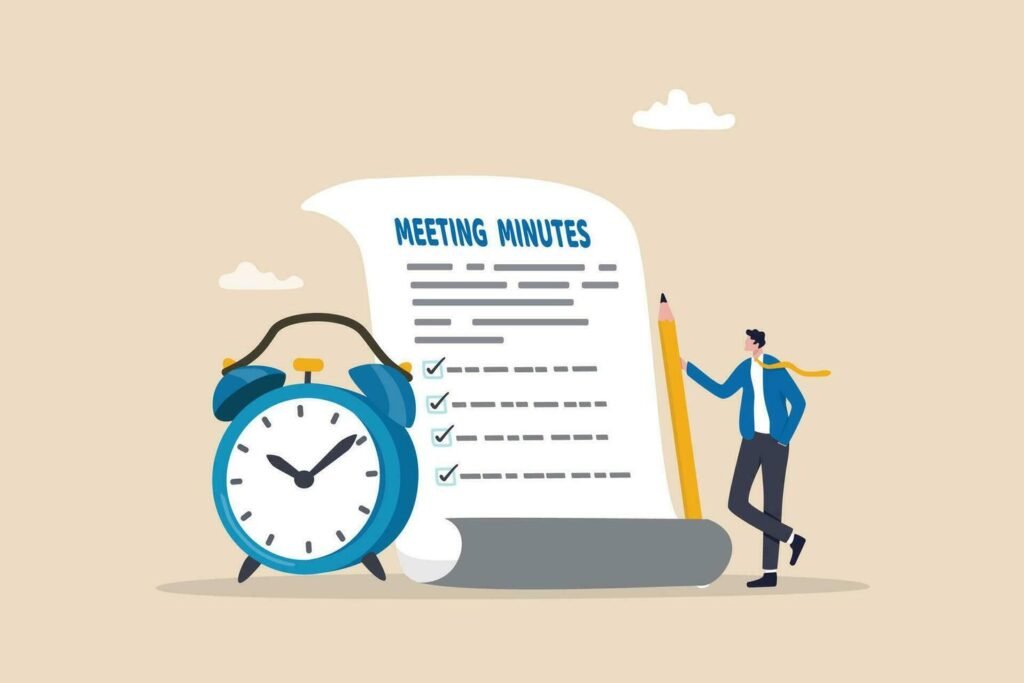What Is The Importance of Minutes In Communication
In the vast landscape of human interaction, communication reigns supreme as the conduit through which ideas, thoughts, and information flow. Effective communication is the bedrock of successful relationships and endeavors, regardless of the context. A crucial, yet often overlooked component of communication is minutes. Let’s delve into why minutes hold such importance in various spheres of communication, particularly in business.
What Is The Purpose of Communication?
Before delving into minute specifics, it’s essential to understand communication’s overarching purpose. Communication facilitates ideas exchange, promotes understanding, fosters collaboration, and drives action. Whether it’s conveying instructions, sharing updates, or resolving conflicts, effective communication is indispensable in achieving common goals and maintaining harmonious relationships.





Types of Communication
Communication manifests itself in various forms, tailored to specific contexts, mediums, and objectives. The following are some types of communication that are common:
- Verbal Communication: Verbal communication involves spoken language to convey messages. Verbal communication allows for real-time interaction and immediate feedback, enabling nuance and clarity.
- Written Communication: Written communication involves written or typed words to convey messages. You can send information via email, letter, report, memo, text message, or social media by writing or typing.
- Nonverbal Communication: Nonverbal communication encompasses cues and signals conveyed without words, such as body language, facial expressions, gestures, posture, tone of voice, and eye contact.
- Visual Communication: Images, diagrams, charts, graphs, videos, and presentations are all forms of visual communication.
- Digital Communication: Digital communication refers to the exchange of information using digital technologies and platforms. Tools for collaboration and communication include emails, instant messaging, social media, video conferencing, and video conferencing.
- Interpersonal Communication: Interpersonal communication occurs between individuals or single persons in face-to-face or one-to-one settings. It encompasses casual conversations, formal discussions, negotiations, interviews, and personal interactions.
- Group Communication: Group communication involves interactions between multiple individuals in a group or team setting. Communication within a group ensures the business runs smoothly by facilitating collaborative decision-making, problem-solving, and coordination of efforts.
- Mass Communication: Mass communication involves the dissemination of messages to large audiences. This includes television, radio, newspapers, magazines, websites, social media platforms, and advertising.
- Intercultural Communication: Intercultural communication occurs between individuals or groups from different cultural backgrounds. Intercultural communication is essential in diverse and multicultural societies, organizations, and global contexts.
What Is the Concept of Minutes?
In the context of meetings, minutes refer to a formal record of proceedings and decisions made during a gathering. Minutes serve as a documented summary of discussions, action items, and resolutions. They capture the essence of the meeting for future reference and accountability. While the term “minutes” may evoke images of timekeeping, in this context, it signifies the meticulous recording of essential details and outcomes.

Importance of Minutes In Business Communication
In the fast-paced realm of business, where decisions carry significant ramifications, minutes cannot be overstated. Here’s why:
- Documentation And Accountability: Minutes provide a tangible record of what transpired during a meeting, including key decisions, action items, and responsibilities assigned to individuals. This documentation serves as a reference point for participants and stakeholders, ensuring clarity and accountability.
- Facilitating Follow-Up: Following a meeting, minutes serve as a roadmap for subsequent actions and follow-up discussions. By outlining action items and deadlines, minutes help keep participants on track and facilitate progress towards agreed-upon goals.
- Legal And Compliance Requirements: In many organizations, maintaining accurate meeting minutes is not just a best practice but a legal and regulatory requirement. Detailed minutes demonstrate diligence and transparency, especially in industries with strict governance and compliance standards.
Components of Minutes of Meeting
While the specific format may vary depending on organizational preferences, minutes typically include the following components:
- Date, Time, and Location of the Meeting: Provides context for when and where the meeting took place.
- List of Attendees: Names of participants, including present and absent.
- Agenda Items: Summary of topics discussed during the meeting.
- Decisions and Action Items: Important decisions were made and tasks were assigned, along with deadlines and responsibilities.
- Any Other Business (AOB): Additional matters addressed outside the main agenda, if any.
- Next Meeting Date and Adjournment: Details regarding future meetings and current session closure.
Benefits of Minutes Taking
Beyond mere documentation, taking minutes offers several benefits:
- Clarity and Consensus: Minutes help ensure that all participants are aware of decisions made and expectations moving forward, fostering consensus and alignment.
- Historical Record: Serving as a historical record, minutes enable organizations to track the evolution of ideas, initiatives, and decisions over time, facilitating continuity and learning.
- Communication Tool: In addition to internal stakeholders, well-crafted minutes can be shared with external partners, clients, or regulatory bodies as a means of transparent communication.
In essence, minutes play a pivotal role in communication tapestry, especially in business dynamics. By capturing the essence of meetings and facilitating clarity, accountability, and follow-up, minutes serve as a linchpin in driving effective collaboration and decision-making. As organizations navigate the complexities of the modern world, embracing the importance of minutes ensures that their communication remains not just informative, but also actionable and impactful.







